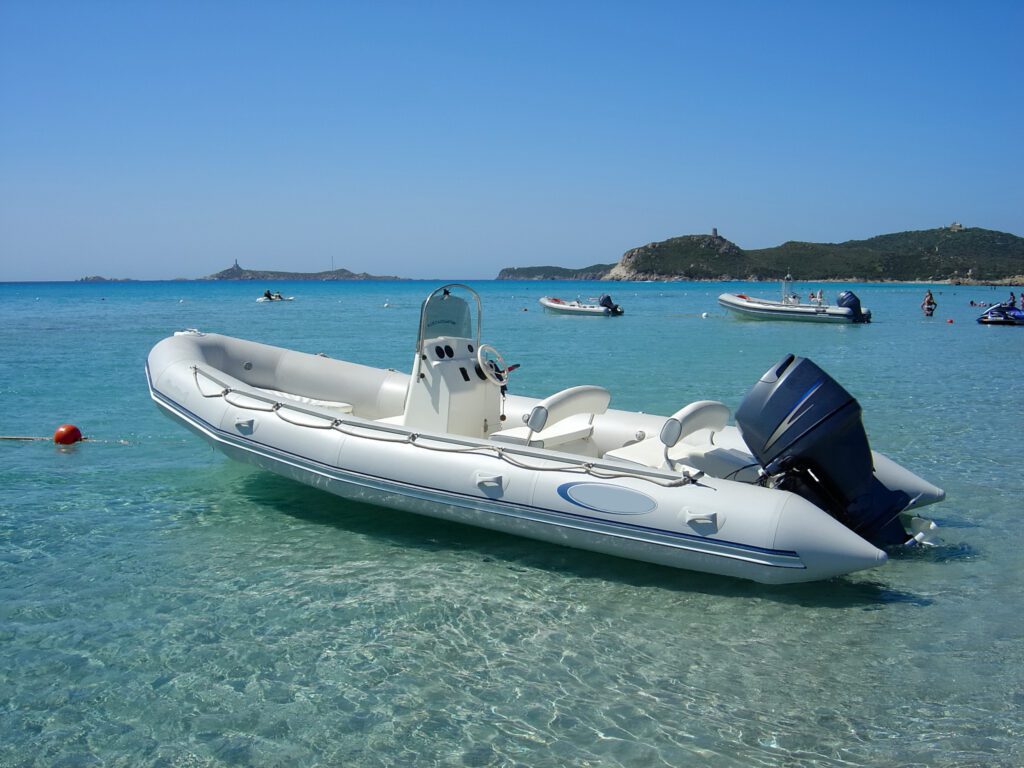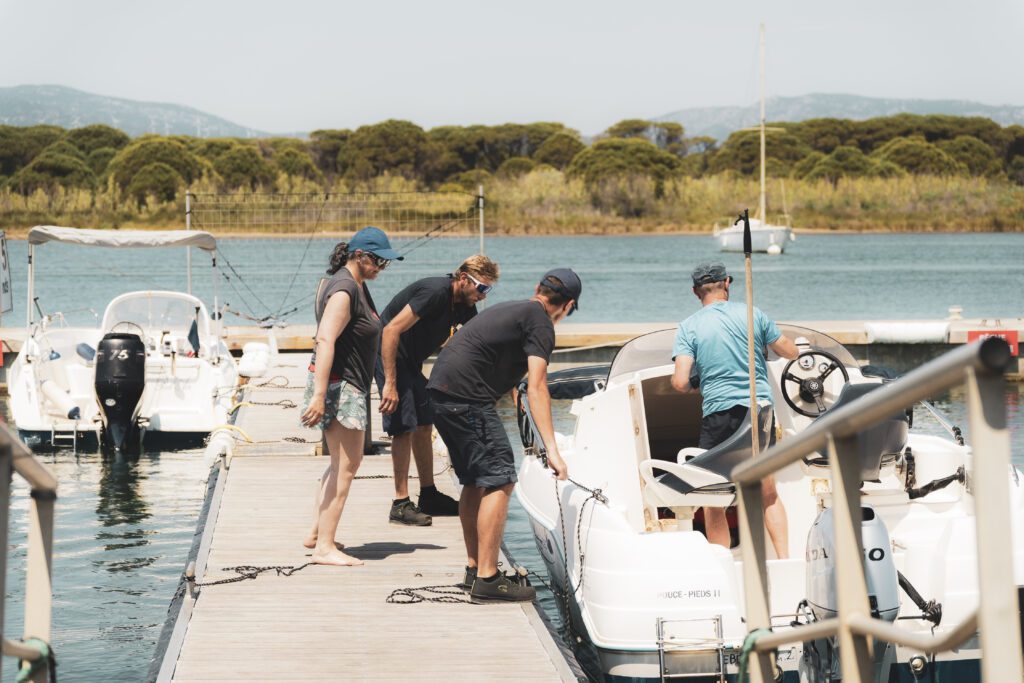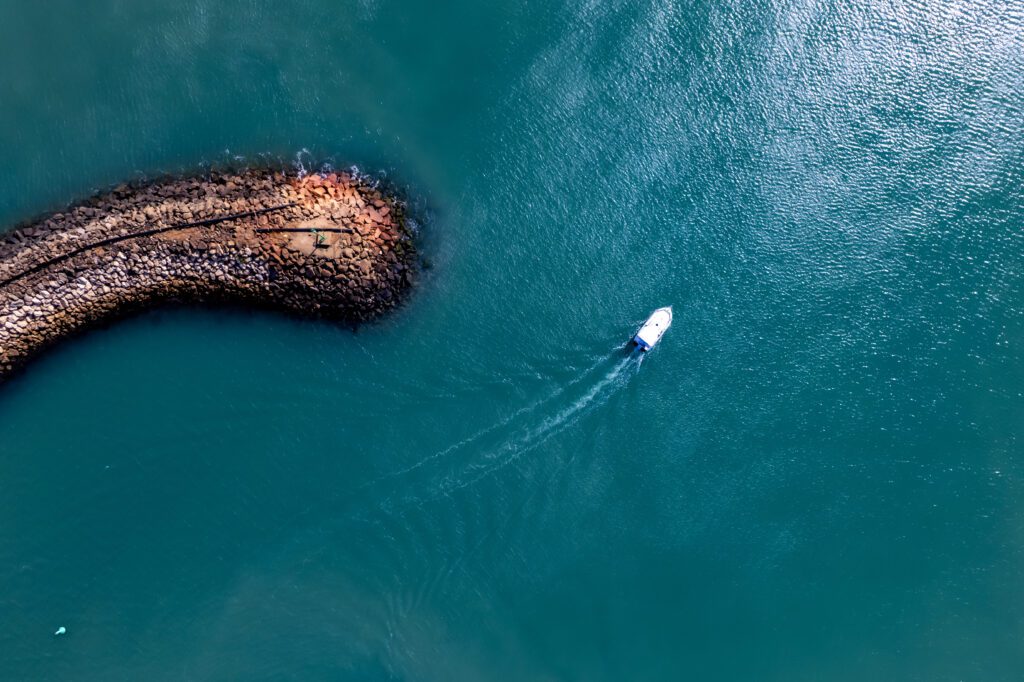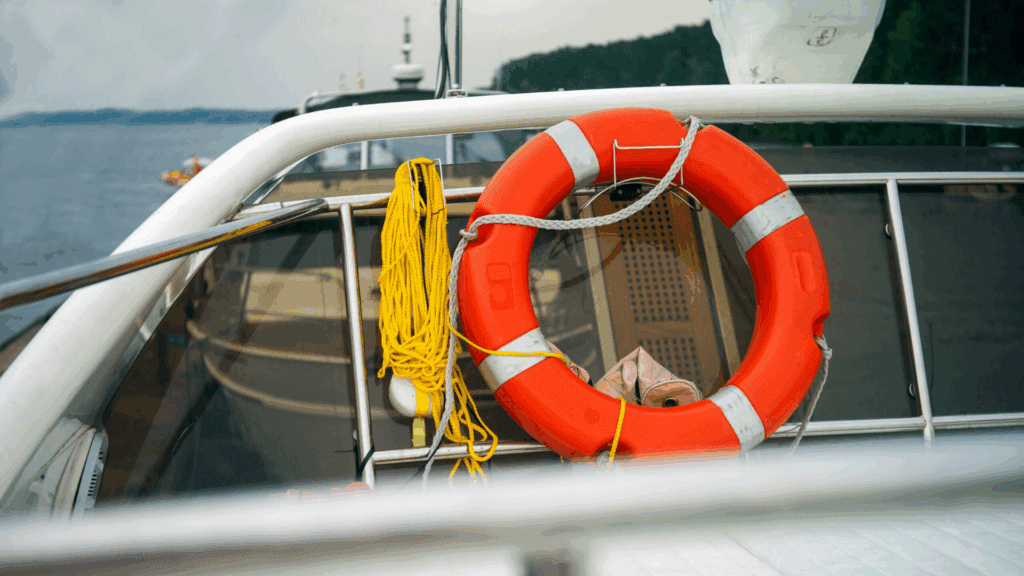Publication date: 09/18/2025
Whether you are leaving from Port Adhoc Paimpol, Port Médoc, Port Adhoc Leucate, Port Napoléon, Port Adhoc Soubise or Port Adhoc Bayonne Anglet, the same rule applies: it is Division 240 that sets out in detail everything you are required to carry on board. In this article, we explain the main principles of the regulation, and how to comply with them.
Division 240: the reference regulation for leisure boaters on safety matters
What is Division 240 and who does it apply to?
Division 240 is a regulatory text that defines the safety equipment requirements for leisure craft under 24 metres in length, used for personal purposes. It applies to motorboats, monohull yachts, catamarans or trimarans, rigid inflatables and even certain beach craft – inflatable boats, rowboats, kayaks, etc. – when they sail a certain distance from the shore.
💡 Did you know?
All leisure boaters who are tax residents in France and sail in French maritime waters must comply with these regulations, whether or not their vessel is registered in France. The rule applies from the moment you enter French waters, even far from the coast. Even if your boat of under 24 metres is registered abroad and moored in a Swedish or Dutch port within our network, for example, sailing in French waters also requires you to comply with Division 240.
The principle of navigation zones and distance from a shelter
When it comes to safety equipment, Division 240 categorises obligations for leisure boaters according to their planned navigation. More precisely, according to the distance they intend to sail away from the coast with their boat.
Thus, depending on whether you wish to sail closer to or further from a “shelter”, you will not be required to carry the same equipment on board.
A shelter is defined as a place where you can reach safety by anchoring, landing or docking, and from which you can then set off again, all without external assistance. A shelter may be a port, a cove, a beach… but it must allow the safe protection of the craft, the crew and the passengers – taking into account the weather conditions and the characteristics of your vessel. Before heading out in a motorboat or yacht, identifying the different shelters along your route or nearby is essential!
In French maritime waters, the different zones are defined as follows:
| Distance from a shelter | Name of the navigation zone |
|---|---|
| Less than 2 nautical miles from a shelter | Basic zone |
| From 2 to 6 nautical miles from a shelter | Coastal zone |
| Up to 60 nautical miles | Semi-offshore zone |
| Beyond 60 nautical miles | Offshore zone |
The principle of Division 240 is simple: the further you sail from a shelter, the more comprehensive the safety equipment required by the authorities becomes. This progressive scale allows equipment to be adapted to the risks linked to distance and the time needed to reach a safe area.
💡 Good to know:
The boat itself is considered the shelter for its tender. When using your tender, without any specific safety equipment, Division 240 allows you to sail up to 300 metres away from your boat.

Mandatory safety equipment depending on navigation
Navigation less than 2 nautical miles from a shelter: basic equipment
For short trips close to our marinas, the required safety equipment is relatively limited.
Up to 2 nautical miles from a shelter, you only need to carry the following basic gear:
- One lifejacket per person, suitable for the build and weight of each passenger
- A light signalling device – for example, a waterproof torch
- Mobile fire-fighting equipment – extinguisher(s) and fire blanket, as per the manufacturer’s instructions
- A manual bailing system – a bailer or a pump to evacuate water in case of flooding
- A towing line – a warp or rope
- An anchor line suited to the boat’s characteristics
- A tide almanac
- A national flag
💡 Good to know:
Lifejackets must be CE approved and provide a minimum buoyancy of 50, 100 or 150 newtons depending on the navigation zone. They may be foam jackets (recommended for children weighing under 30 kg) or automatic models.
Semi-offshore and offshore navigation: equipment for open sea and blue water
| Marina in our group | Nearby coastal destinations to explore |
|---|---|
| Port Adhoc Paimpol | Breton coast, Île de Bréhat, Île Maudez |
| Port Adhoc Soubise | Charente estuary, Atlantic coast, Île Madame |
| Port Médoc | Gironde estuary |
| Port Adhoc Bayonne Anglet | Adour river |
| Port Adhoc Leucate | Mediterranean coast |
| Port Napoléon | Mediterranean coast |

Coastal navigation (up to 6 nautical miles): additional equipment
To sail further from our marinas and into coastal waters, you must carry more substantial equipment.
In coastal zones, the regulation requires that, in addition to the basic equipment, your motorboat or yacht carries:
- A man-overboard locating and retrieval device – horseshoe buoy or ring buoy
- 3 red hand flares
- A magnetic compass
- Up-to-date official nautical charts (paper or digital)
- The International Regulations for Preventing Collisions at Sea (COLREGs)
- A description of the buoyage system
Semi-offshore and offshore navigation: equipment for open sea and blue water
| Marina in our group | Coastal destinations to explore |
|---|---|
| Port Adhoc Paimpol | Archipelago of the Sept-Îles |
| Port Adhoc Soubise | Atlantic coast up to the Gironde estuary, Île de Ré, Île d’Aix, Île d’Oléron |
| Port Médoc | Atlantic coast north of Royan, Île de Ré, Île d’Aix, Île d’Oléron |
| Port Adhoc Bayonne Anglet | Southern Atlantic coast – French and Spanish Basque Country |
| Port Adhoc Leucate | Mediterranean coast – France and Spain |
| Port Napoléon | Mediterranean coast |
Semi-offshore and offshore navigation: equipment for open sea
For longer passages or sailing offshore, the equipment required under Division 240 again depends on the navigation zone: semi-offshore up to 60 nautical miles from a shelter, and offshore beyond that distance.
The equipment includes all the mandatory items for coastal zones, plus the following:
- An approved life raft suited to the vessel’s carrying capacity
- Position-fixing equipment
- A light list
- A logbook
- A means of receiving weather bulletins
- A safety harness and tether per motorboat, or one per crew member on a yacht
- A compliant first-aid kit
- A night-time locating and searchlight device – such as a search projector
- A fixed VHF radio
Destinations within 6 to 60 miles of shelter, from our marinas
| Marina in our group | Semi-offshore destinations to discover |
|---|---|
| Port Adhoc Paimpol | Channel Islands (Jersey, Guernsey, Sark, Alderney) |
| Port Adhoc Soubise | Île d’Yeu |
| Port Médoc | Île d’Yeu |
| Port Adhoc Bayonne Anglet | The Bay of Biscay (particularly for fishing) |
| Port Adhoc Leucate | The Mediterranean Sea (particularly for fishing) |
| Port Napoléon | The Mediterranean Sea (particularly for fishing) |
For sailing beyond 60 nautical miles from a shelter, crews must also carry an emergency position-indicating radio beacon (EPIRB) registered with AFNR, and a portable VHF. A satellite communication system is also recommended.
Destinations more than 60 miles from a shelter, from our marinas
| Marina in our group | Offshore destinations to discover |
|---|---|
| Port Adhoc Paimpol | The English Channel and the North Sea, England, Ireland, Scotland |
| Port Adhoc Soubise | Arcachon, the Atlantic Ocean and the Bay of Biscay |
| Port Médoc | The Bay of Biscay and the Atlantic Ocean |
| Port Adhoc Bayonne Anglet | The Bay of Biscay and the Atlantic Ocean |
| Port Adhoc Leucate | Mediterranean islands: Balearic Islands (Menorca, Mallorca, Ibiza), Corsica, Sardinia, Sicily, Malta… |
| Port Napoléon | Mediterranean islands as well |
💡 Good to know:
From Port Médoc, Arcachon is located 75 nautical miles away. As this part of the Atlantic coast offers no shelters, this is considered offshore navigation. The same applies to the passage from Port Adhoc Bayonne to Arcachon when a stopover in Capbreton is not possible.

Inspections and checks by maritime authorities
Safety equipment inspections at sea
In France, checks at sea are carried out by the Maritime Police, Maritime Affairs or Customs. At any time, you may be stopped by one of these authorities for an inspection of your safety equipment.
The officers will check not only the presence of mandatory equipment but also its condition. The items in the first-aid kit and pyrotechnic devices must always be valid – their expiry dates must not have passed.
Sanctions for non-compliance
If your safety equipment is missing or non-compliant, you risk a 4th class fine with an obligation to correct the situation, or in the worst cases, your boat being detained.
Remember: in our marinas in Paimpol, Soubise, Verdon-sur-Mer, Bayonne-Anglet, Leucate and Port-Saint-Louis-du-Rhône, we offer tailored solutions to equip your boat properly and have your equipment serviced.
Make sure you are compliant – and sail with peace of mind!
Finally, bear in mind that Division 240 is always subject to change. To ensure you sail in full compliance with your obligations, make sure to stay updated on regulatory developments.

